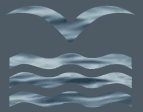INVADERS: They come by Air, Land and Water
April 1st-October 10th, 2016
INVADERS! Page
The Museum’s latest exhibit Invaders: They come by Air, Land, and Water! focuses on the impact that various invasive plant and animal species have had on the Connecticut River and its environs. Featuring artwork by Michael DiGiorgio, a videography by WFSB, a learning laboratory, and more! The exhibit will be accompanied by several related lectures throughout the season.
This exhibit was made possible by the generous support of the following sponsors:
The Long Island Sound Study
WFSB Channel 3 Eyewitness News
The William & Alice Mortensen Foundation
The Rockfall Foundation
Connecticut Office of Tourism
The Community Foundation of Middlesex County
Saybrook Point Inn
The Edgar & Geraldine Feder Foundation
INVADERS! premiered at the Connecticut River Museum in 2016, focusing on the spread and impact that invasive organisms have had on both terrestrial and aquatic environments. Taking a fun, informative approach that casts these “invaders” as the villains in a monster movie, the exhibit aims to both entertain and educate visitors of all ages. A highlight of the exhibit is four short “breaking news” videos produced by WFSB’s Eyewitness News Team, each highlighting a different invasive species impacting the local environment. “Monster Movie” artwork by Michael DiGiorgio, specimen samples, a child’s learning lab, colorful wall mounted informative placards and more aim to make this important topic approachable for families with young children. This exhibit will be travelling after leaving CRM and is not to be missed!
What are Invasive Species?
The Connecticut River Valley supports an exceptional range of animal and plant life. Along the River’s 410 mile journey, diverse habitats include lush, deciduous forests in New Hampshire and Vermont, fertile flood plains in central Massachusetts, and pristine estuarine environments near Long Island Sound. One of the biggest threats to this distinctive region today is the spread of invasive species. In many cases, the invasion resembles a classic monster movie that unfortunately has serious, real-life consequences.
Invasive species degrade habitats and water quality as they alter ecosystems. They limit biodiversity by pushing out or eliminating native species and impact the health and living resources of the watershed for all creatures – including humans.
Some of these “alien life forms” have been here for centuries while others are new arrivals introduced by people. Whether by accident or intention, they are altering our air, land, and water. It is up to us to help save the day.
Native vs Non-Native Life
Native plants and animals are those that originate in an area or that over centuries have become naturalized, taking on characteristics and behaviors that do not jeopardize the balance of an ecosystem. Invasive species are, according to the U.S. Fish & Wildlife Service, “plants or animals that are disruptive in a way that causes environmental, economic, or biological harm.” Defining an invasive species is somewhat arbitrary and a species might appear on one list, but not another.
Why care about invasive species?
Economic Impact – The cost to control invasive species is extremely high and results in lost resources such as agriculture and timber. According to the Connecticut DEEP, there are “indications that some invasive species can have a negative impact on property values.”
Ecological Impact – Invasive species have the ability to harm native animals and plants by eating them, out-competing them for resources such as sunlight and food, and bringing disease. They can cause irrevocable damage to the landscape and water quality.
Recreational Impact – Invasive plants and animals can change the dynamics and character of a forest, kill off game fish, alter swimming locations with thick vegetation and matting, reduce water quality, and clog boat motors.
Where are they?
AIR
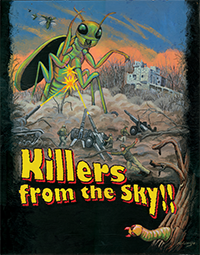
Air invaders, while not always as noticeable as those found on land and in water, often impact multiple habitats. They can be large benign looking birds, small insects, or as imperceptible as microscopic organisms.
The majestic mute swan for example uses its long neck to graze on aquatic vegetation, damaging marsh habitats and often displacing native ducks. Insects such as the emerald ash borer and wooly adelgid have the potential to alter the forest composition by killing trees. The white nose bat syndrome, an invasive fungus of uncertain origin, is decimating critical bat populations in the northeast and has already killed an estimated 5.7 million.
LAND
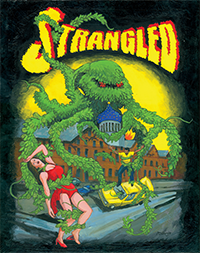
For years humans have brought plants and animals – intentionally or inadvertently to the Connecticut River Valley. What starts off looking beautiful, such as the seductive red berries of bittersweet, soon takes over the landscape. They choke out native trees, suffocate the forest undergrowth, and in the process degrade habitats.
Like the giant all-consuming gelatinous mass from the science fiction movie The Blob, these plants and animals often appear unstoppable. Ornamental shrubs from the nursery trade, medicinal plants, and introduced animals can diminish the complexity and diversity of ecosystems. Americans spend millions of dollars each year combating the invaders.
WATER
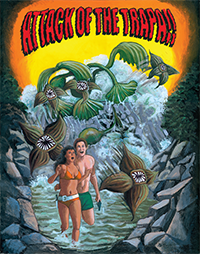
Water is a great conduit for humans and invasive species. While some plants and animals have arrived through natural currents, the majority arrive because people have brought them here on ships.
Many people, particularly boaters, are aware of zebra mussels as an invasive threat. However, the incursion goes well beyond one animal. Homeowners have introduced the decorative purple loosestrife that takes over wetlands, and fisherman have helped the blob-like rock snot to spread.
Riding on or inside vessels, numerous species have made their way around the world to America, Long Island Sound, and eventually the Connecticut River. From the depths they rise to clog waterways, reduce oxygen, kill fish, and monopolize ecosystems.
Some Selected Examples of Invasive Organisms
Oriental Bittersweet. Celastrus orbiculatus. Origin: Eastern Asia
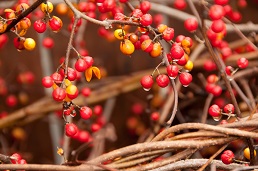
Oriental bittersweet was introduced through the garden industry in the 1860s and is attractive for its red and orange berries. It is easily dispersed by birds and grows quickly as it twists up and over surrounding vegetation, smothering it in the process. Invasive bittersweet is similar to our native bittersweet (C. scandens) but is more aggressive and tolerant of diverse habitats. The invader can also hybridize with our native variety and can genetically “swamp” the genotype, which could eventually eliminate the true native species.
Japanese knotweed. Polygonum cuspidatum. Origin: Asia
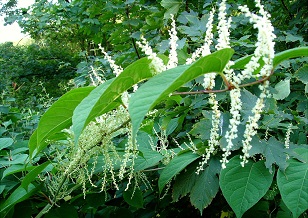
Japanese knotweed was introduced to Britain about 1825 and then traveled to North America. This invasive is tolerant of a variety of habitats and, once established, is difficult to remove. It is found along waterways, roadways, and in partly shaded areas. Japanese knotweed is a big plant, grows aggressively in early spring, and crowds out native species. Along streams and river banks, this plant can choke off grasses and understory plants, making the banks unstable during storms and floods. The only sure way to eliminate Japanese knotweed is through repeated applications of herbicides.
Chinese Mitten Crab. Eriocheir sinesis. Origin: China and Korea
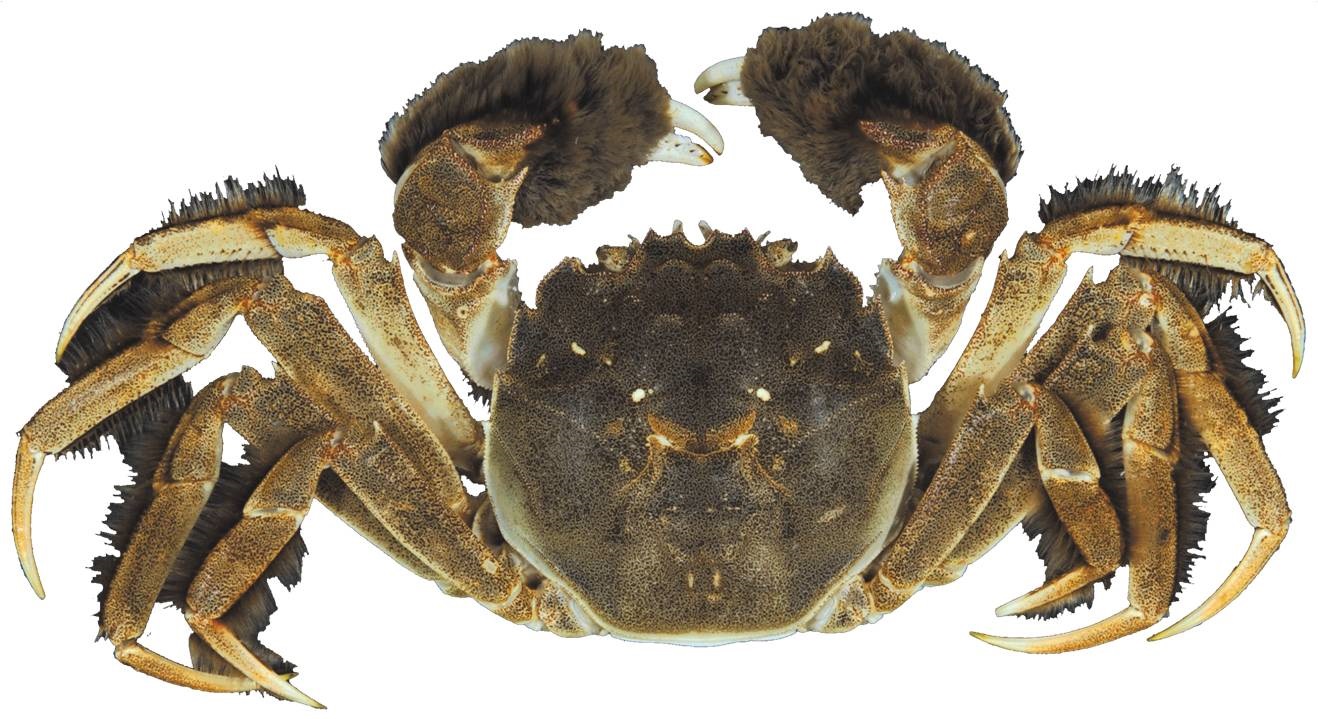
Chinese mitten crabs arrived in America via ship ballast water from international trade. They first appeared in San Francisco Bay in 1991 and have been in Long Island Sound since 2005. The mitten crab is tolerant of salt and brackish water and has the potential to become established in Long Island Sound and the tidal waters of the Connecticut River. The crabs can displace native species and destabilize creeks and wetlands. The larvae can foul intake pipes of sewage plants and industry.
Purple Loosestrife. Lythrum salicaria. Origin: Europe and Asia
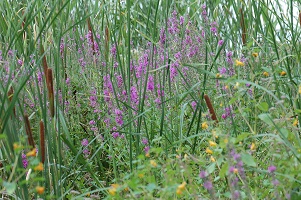
Purple Loosestrife was introduced to North America in the early 1800’s because the plant was valued as an ornamental, a medicinal herb and livestock feed. Purple loosestrife’s dense growth can alter water-flow in streams and replace native wetland species. This invasive is difficult to manage because each plant produces up to two million seeds a year. The plant has no natural enemies. Beetles that eat purple loosestrife have been introduced as a biological control. Purple loosestrife is the most widely distributed invasive plant in the northeast. Thoreau’s 1850’s journals document climate change and its impact on plants. He recorded the flowering dates of plants in Massachusetts. Thoreau’s records show that average native plants are blooming two weeks earlier today but that Purple Loosestrife and other invasive plants are is blooming more than three weeks earlier now. This gives them a competitive advantage.
White Nose Syndrome (Fungus). Pseudogymnoascus infestans. Origin: Unknown
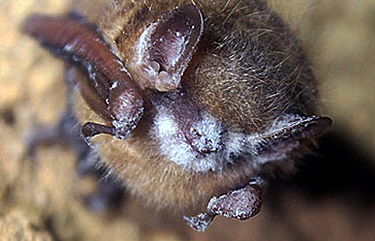
White Nose Syndrome is a fungal disease that attacks hibernating bats and is probably spread by humans hiking through caves. Little is known about this disease, including its origin. Some scientists speculate that it was introduced from Europe. Its name is derived from the white fungus that appears on the muzzle and other parts of bat bodies. Since first being documented during the winter of 2006-07, the disease has caused the death of over 5.7 million bats. As bats are voracious eaters of insects, this disease could have a catastrophic impact on the environment.
Water Chestnut. Trapa natans. Origin: Europe, Asia, and Africa
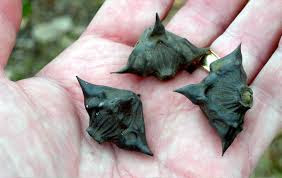
Water Chestnut was introduced to the northeast in the 1870s as an escapee from the botanical gardens at Harvard University. This plant grows in shallow water where the leaves form dense mats, clogging waterways and blocking sunlight. Trapa produces both submerged and floating leaves allowing it to quickly take over large areas of shallow water habitat and effectively crowding out native aquatic vegetation. When aquatic plant growth becomes this dense it can lead to depleted oxygen levels (hypoxia), killing fish and other organisms. The seed pods of Water Chestnut have very sharp spines that can penetrate the feet of bathers or fishermen and also because they float can be long-distance dispersal agents. One of the common names for Trapa is “Devil pod”, a reference to the spiny seed pods. This plant is a “high priority” invasive species in the Connecticut River watershed.
Water chestnut is found in the Connecticut River watershed in both Massachusetts and Connecticut, usually in the quiet coves and backwaters of the watershed rather than the main stem. It was first found in the Connecticut River in the Hartford area of Connecticut in 1999, and later in Haddam, Deep River and Lyme. The seed pods have been found tangled up in the feathers of Canada geese which suggests the possibility of long distance dispersal by birds.
Emerald Ash Borer. Agrilus plannipennis. Origin: Asia
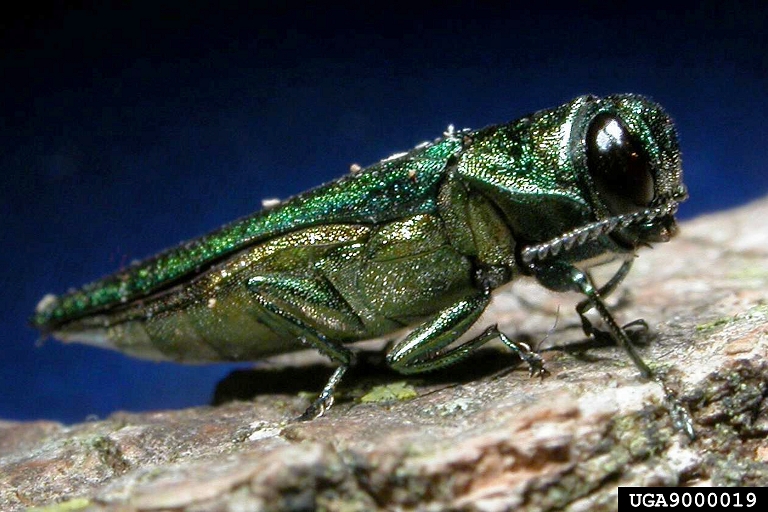
The brilliant green elytra (wing-covers) of this small beetle make it easy to recognize. It was first found in the United States in 2002, probably arriving in packing materials. The beetle’s larvae kill ash trees by feeding under the trees’ bark and destroying their vascular system. Emerald ash borers have already killed 25,000,000 ash trees in the east and are rapidly spreading. Scientists are currently researching biological controls that may stop the spread of the emerald ash borer.
They’re Indescribable! They’re Indestructible! Nothing Can Stop Them… Except You!
Fight the invaders today. . .
Learn about Native and Invasive Species
• Find out what is native to your area.
• Learn to identify invasive species where you live.
Avoid the spread of invasive species
• Think twice before planting or transporting things to your property.
Be observant and help eradicate
• Watch for invasive species
• Participate in an eradication event to remove invasives where you live.
Volunteer
• Get involved with a preservation, conservation or land trust in your area.
If you can’t beat ’em, eat ’em!
One newer, creative way to decrease invasive species once they are established is the “Can’t beat ’em? Eat ’em!” movement.
Several restaurants, books, and websites are dedicated to reducing invasive species populations by making them into food. In Chicago for example, one restaurant now sells Asian carp burgers and in New Haven, Connecticut Miya’s Sushi has a special invasive species menu.
If an invasive species is established in your area and not eradicable, the next best management tool may be to eat the invader. Just some food for thought….
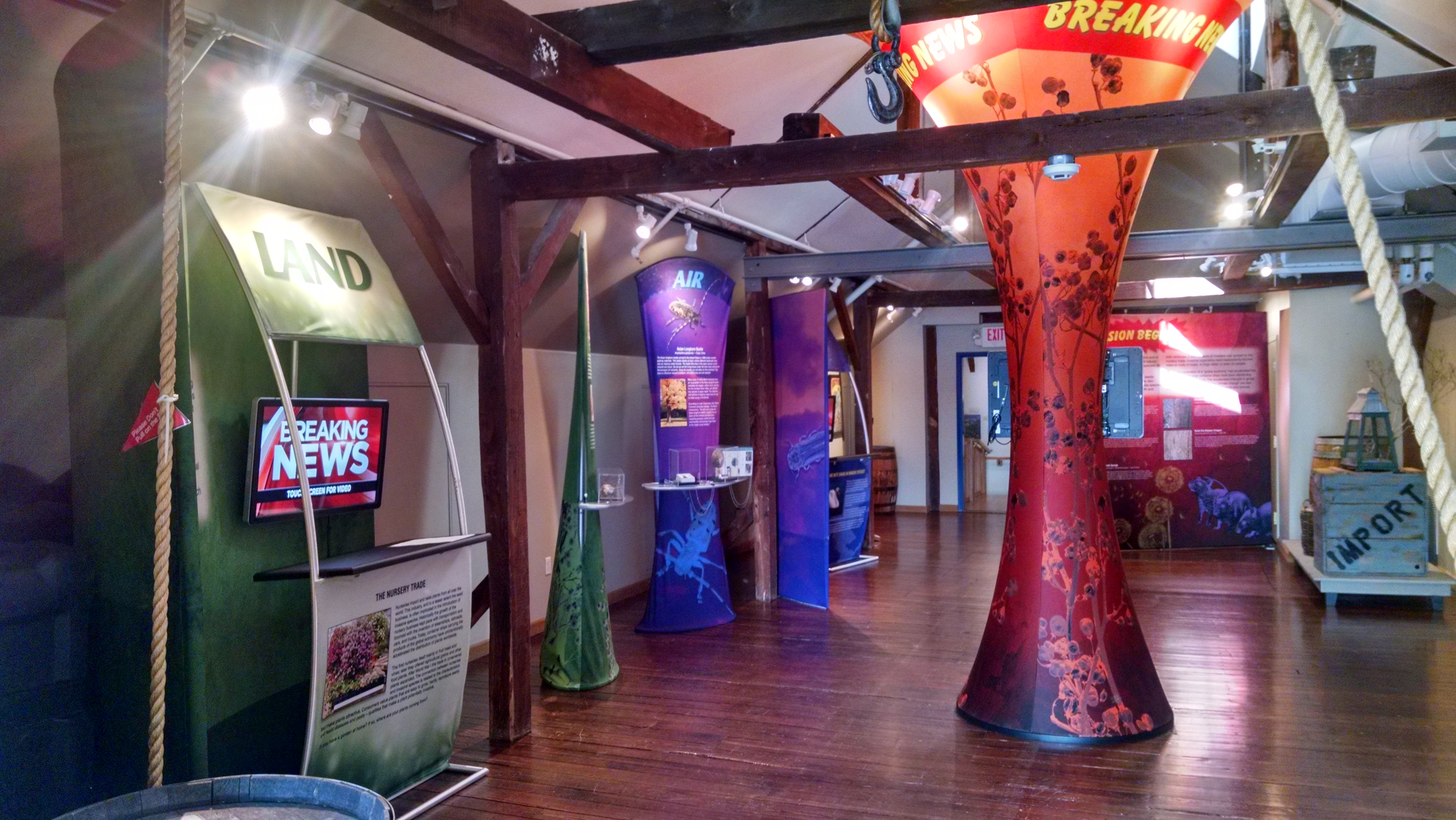
This Exhibit Was Made Possible Through Generous Support From The Following Sponsors:
WFSB Channel 3 Eyewitness News
The William & Alice Mortensen Foundation
The Community Foundation of Middlesex County
The Edgar & Geraldine Feder Foundation

